标签:binary 条件 dex == oid err 二分查找算法 字符串排序 ima
Part1:
1-1一维数组在内存中的存放及地址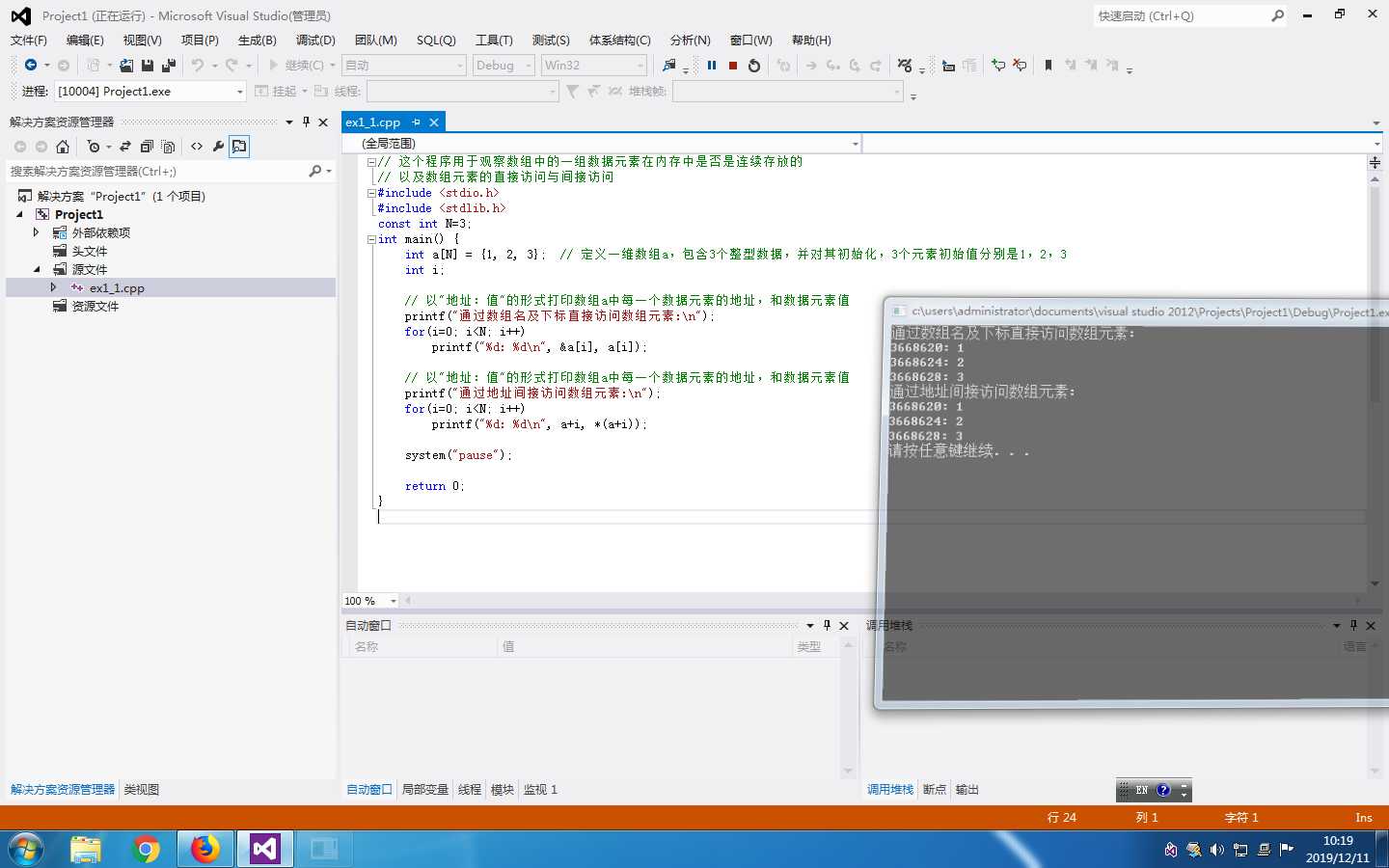
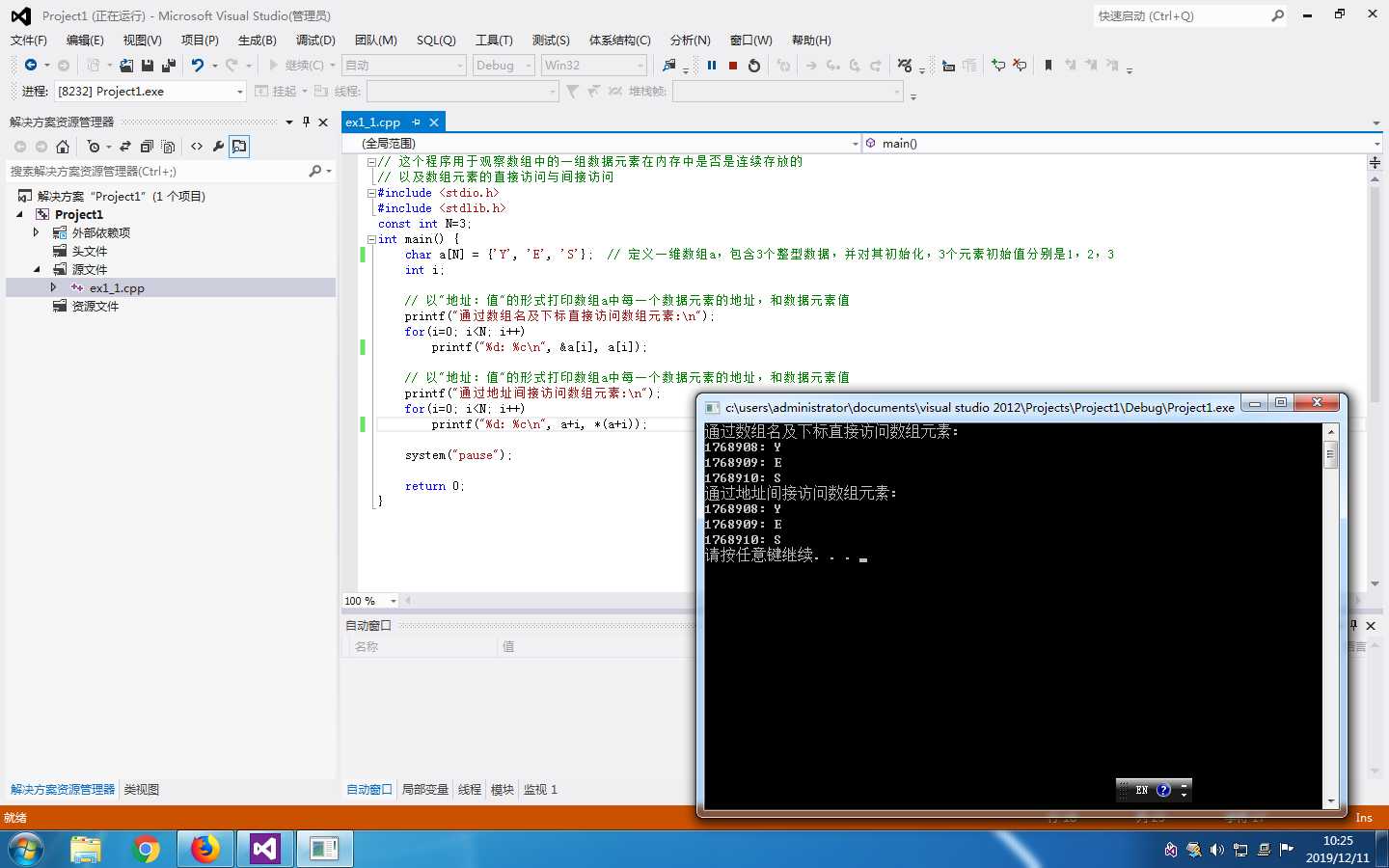
1、数组元素在内存中是连续存放的。2、a+i和&a[i]都表示数组元素的地址,*(a+i)和a[i]都表示数组元素。但整形数据和字符型数据占用内存的大小不同。
1-2:二维数组在内存中的存放及地址
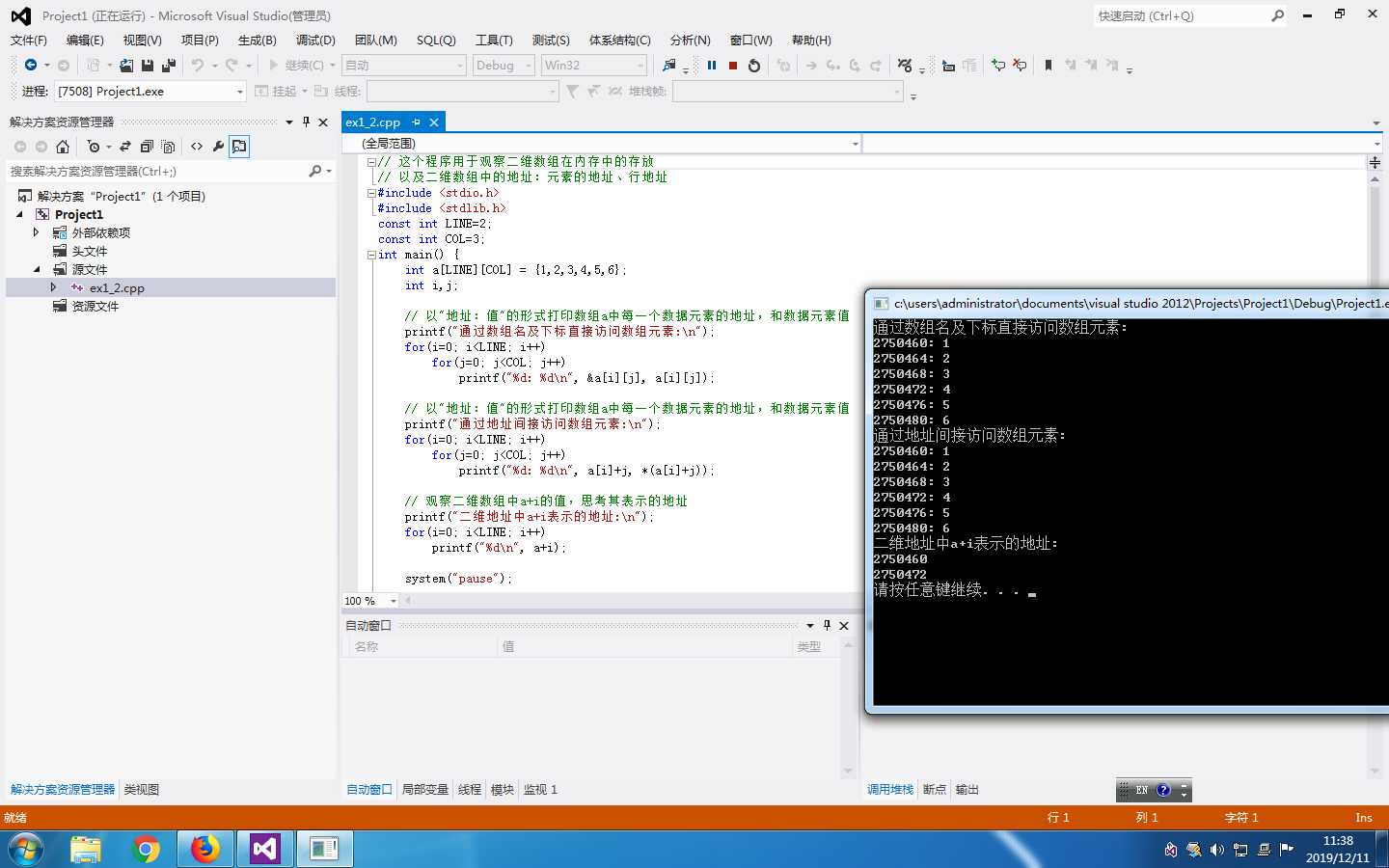
1、二维数组在内存中是按行存放的。2、a[i]+j和&a[i][j]都表示二维数组元素a[i][j]的地址,*(a[i]+j)和a[i][j]都表示二维数组元素a[i][j]。3、在二维数组中,a+i表示第i+1行的首地址,a[i]表示第一个元素的地址。
1-3使用指针变量间接访问一维数组
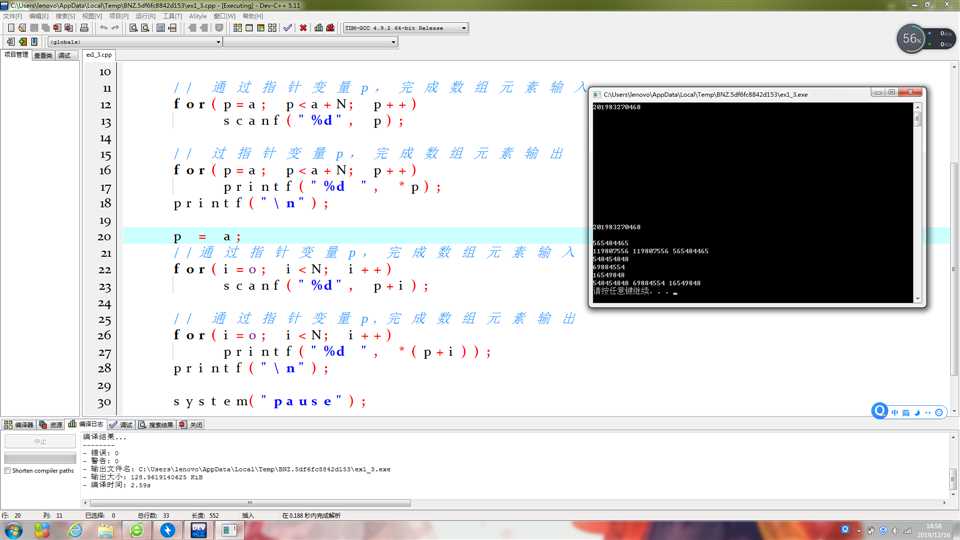
1、在程序中,指针变量p在使用时对指针变量p进行了初始化把数组元素a【0】的地址赋给了p,指向了a【0】的地址。2、line12~line13执行完后p指向数组元素a【2】的地址,line16~line17执行完后,p指向数组元素a【2】。3、line22~line27执行完后,p指向数组元素a【2】,line26~line27执行完后指向数组元素。4、初始化顺序不同。
1—4:使用指针变量间接访问二维数组
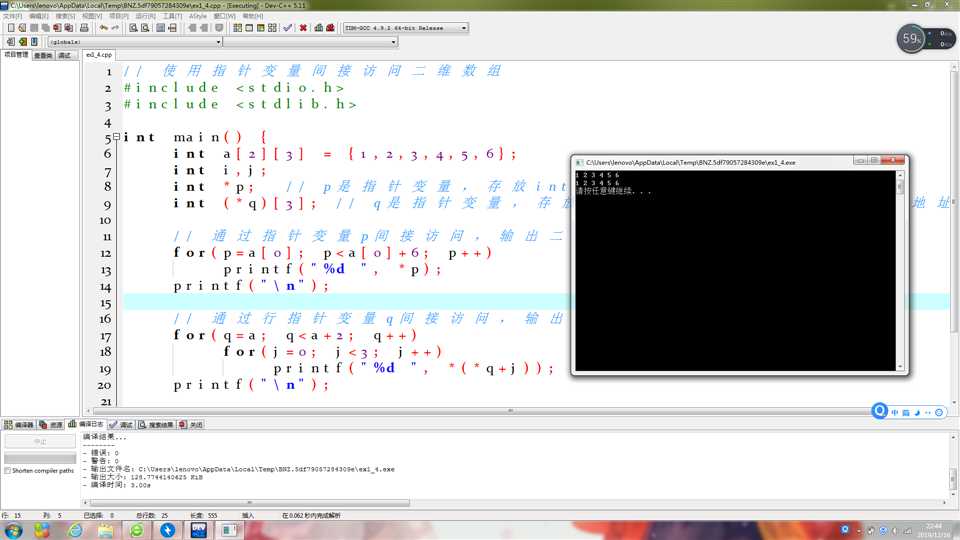
1、可以改,a【0】和&a【0】【0】都表示数组第一个元素的地址。2、line19*q+j表示第a【j】的地址*(*q+j)表示数组元素a【j】。
Part 2综合编程应用
2—1二分查找算法及编程应用
#include <stdio.h> #include <stdlib.h> const int N=5; int binarySearch(int x[], int n, int item); // 函数声明 int main() { int a[N]={2,7,19,45,66}; int i,index, key; printf("数组a中的数据:\n"); for(i=0;i<N;i++) printf("%d ",a[i]); printf("\n"); printf("输入待查找的数据项: "); scanf("%d", &key); // 调用函数binarySearch()在数组a中查找指定数据项item,并返回查找结果给index // 补足代码① // ××× index=binarySearch(a,N,key); if(index>=0) printf("%d在数组中,下标为%d\n", key, index); else printf("%d不在数组中\n", key); system("pause"); return 0; } //函数功能描述: //使用二分查找算法在数组x中查找特定值item,数组x大小为n // 如果找到,返回其下标 // 如果没找到,返回-1 int binarySearch(int x[], int n, int item) { int low, high, mid; low = 0; high = n-1; while(low <= high) { mid = (low+high)/2; if (item == x[mid]) return mid; else if(item<x[mid]) high = mid - 1; else low = mid + 1; } return -1; }
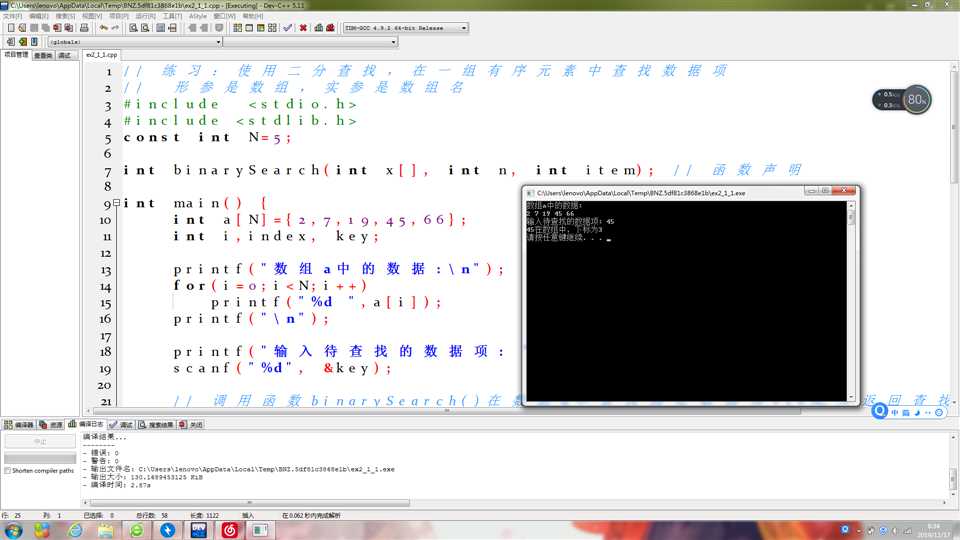
#include <stdio.h> #include <stdlib.h> #define N 10 int fun(int *a,int m) { int low = 0, high = N-1, mid; /*************ERROR**************/ while(low <= high) { mid = (low+high)/2; /*************ERROR**************/ if(m < *(a+mid)) high = mid-1; /*************ERROR**************/ else if(m > *(a+mid)) low = mid+1; else return(mid); } return(-1); } int main() { int i,a[N]={-3,4,7,9,13,24,67,89,100,180},k,m; printf("a数组中的数据如下:\n"); for(i=0;i<N;i++) printf("%d ",a[i]); printf("\nEnter m: \n"); scanf("%d",&m); /*************ERROR**************/ k = fun(a,m); if (k>=0) printf("m=%d,index=%d\n",m,k); else printf("Not be found!\n"); system("pause"); return 0; }
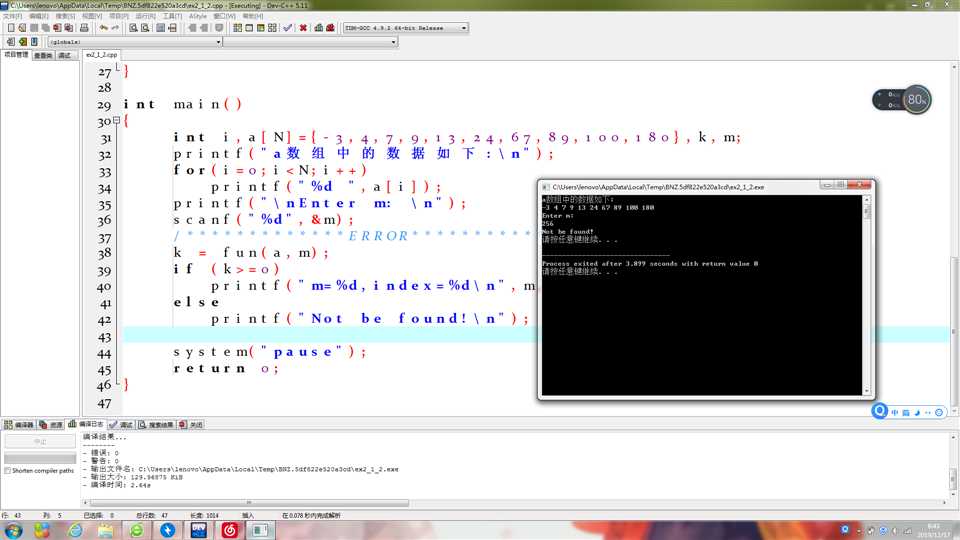
2—2选择排序算法及编程应用
2-2-1

2-2-2字符串选择排序
#include <stdio.h> #include <string.h> #include <stdlib.h> void selectSort(char str[][20], int n ); // 函数声明,形参str是二维数组名 int main() { char name[][20] = {"John", "Alex", "Joseph", "Taylor", "George"}; int i; printf("输出初始名单:\n"); for(i=0; i<5; i++) printf("%s\n", name[i]); selectSort(name, 5); // 调用选择法对name数组中的字符串排序 printf("按字典序输出名单:\n"); for(i=0; i<5; i++) printf("%s\n", name[i]); system("pause"); return 0; } // 函数定义 // 函数功能描述:使用选择法对二维数组str中的n个字符串按字典序排序 void selectSort(char str[][20], int n) { char temp[20]; int i,j,k; for(i=0;i<n-1;i++) { k=i; for(j=i+1;j<n;j++) if(strcmp(str[j],str[k])<0) k =j; if(k!=i){ strcpy(temp,str[i]); strcpy(str[i],str[k]); strcpy(str[k],temp); } } // 补足代码 // ××× }
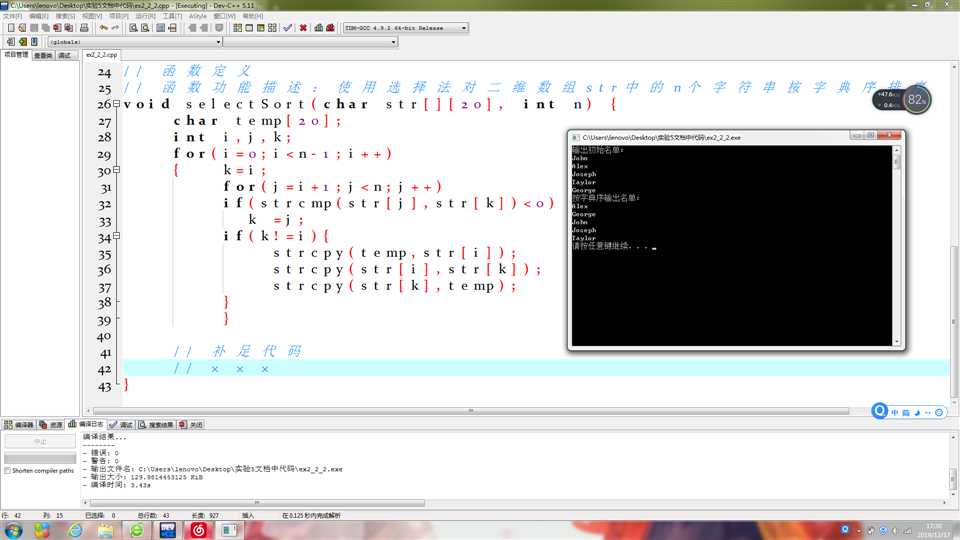
2——3用指针处理字符串
2-3-1
#include <string.h> #include <stdio.h> #include <stdlib.h> void fun(char *a) { /*****ERROR********/ int i; char *p = a; /****ERROR***/ while(*p && *p == ‘*‘) { a[i] = *p; i++; p++; } while(*p) { /******ERROR*******/ if(*p != ‘*‘) { a[i] = *p; i++; } p++; } /******ERROR*******/ a[i] = ‘\0‘; } int main() { char s[81]; printf("Enter a string :\n"); gets(s); /***ERROR******/ fun(s); printf("The string after deleted:\n"); puts(s); system("pause"); return 0; }
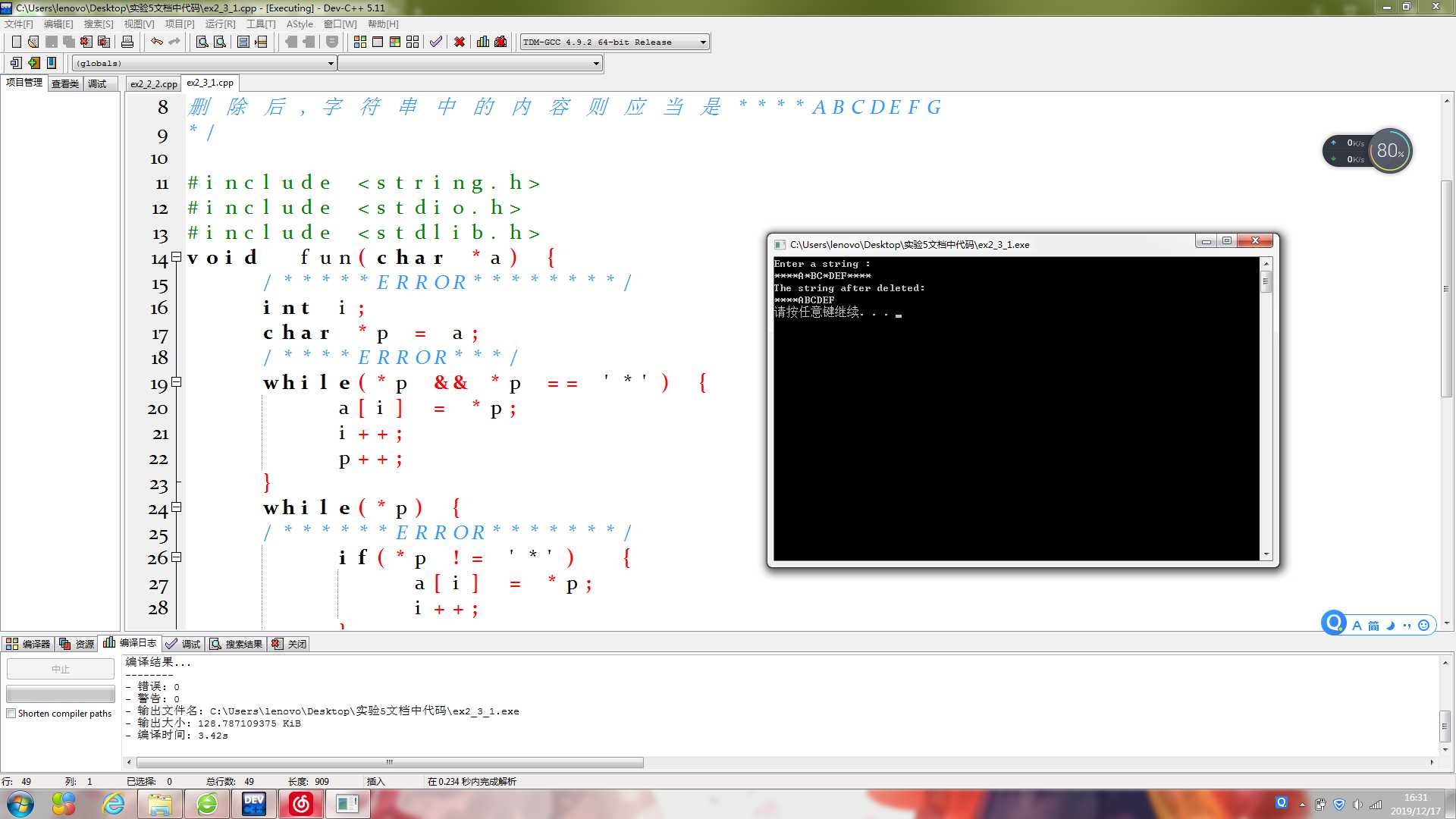
#include <stdio.h> #include <stdlib.h> #include <string.h> void fun(char *a) { /**ERROR******/ int i; char *t = a, *f = a; char *q = a; while(*t) t++; t--; while(*t == ‘*‘) t--; while(*f == ‘*‘) f++; /***ERROR***/ while (q<f) { a[i] = *q; q++; i++; } while (q<t) { /***ERROR**/ if(*q != ‘*‘) { a[i] = *q; i++; } q++; } while (*q) { a[i] = *q; i++; q++; } /**ERROR**/ a[i]=‘\0‘; } int main () { char s[81]; printf("Entre a string:\n"); gets(s); /**ERROR**/ fun(s); printf("The sting after deleted:\n"); puts(s); system("pause"); return 0; }
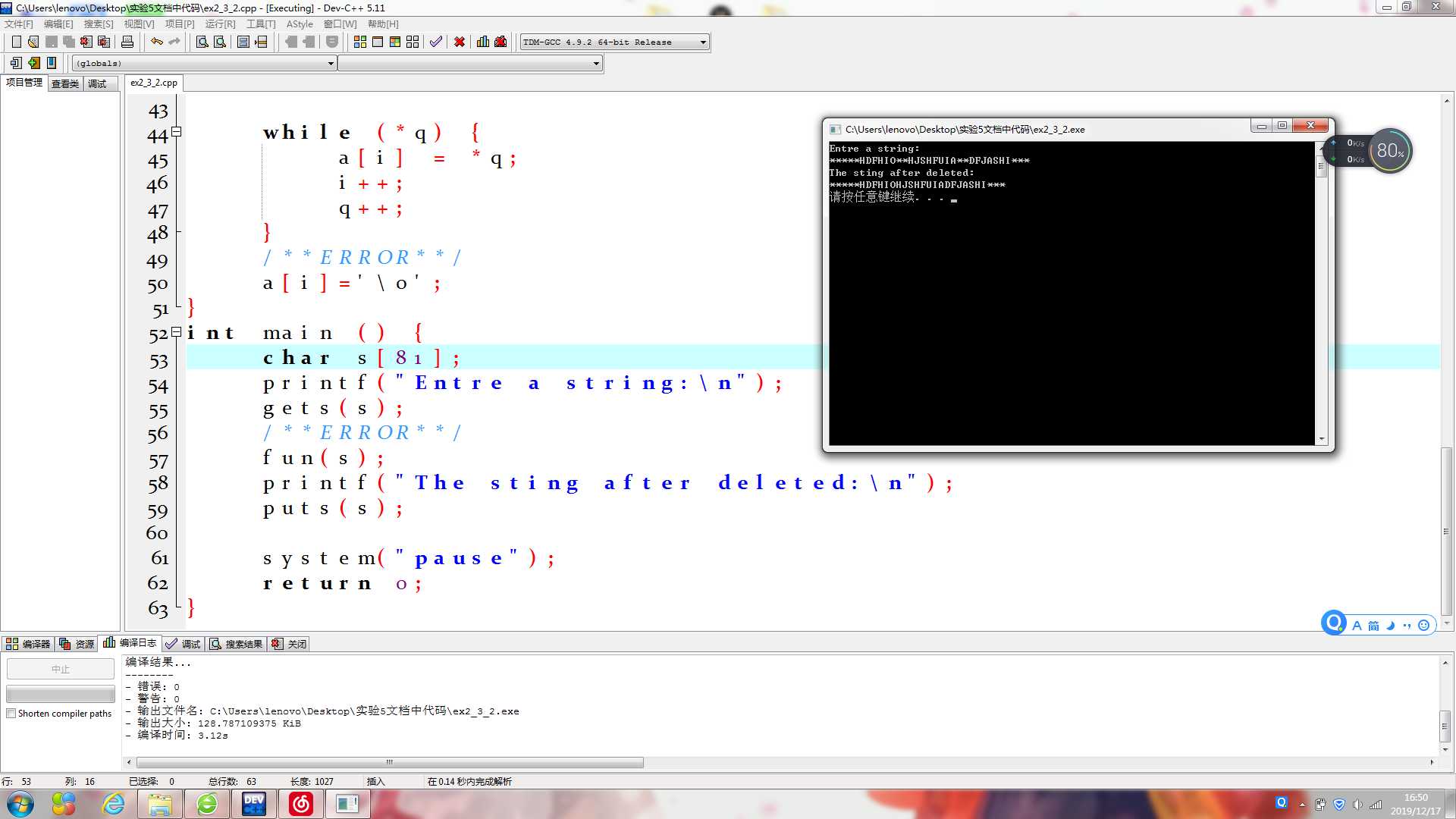
实验总结:
1、冒泡排序容易与选择排序弄混淆,注意对比对象。2、数组与指针的本质都是地址,但还不熟悉,不能一眼看透,看来还是演多想想。3、字符串的赋值和比较要借助函数,不能直接进行。4、进行程序改错的时候要注重边界条件和逻辑关系。
还是需要进行更多的练习啊。
标签:binary 条件 dex == oid err 二分查找算法 字符串排序 ima
原文地址:https://www.cnblogs.com/Hy4934-d/p/12021676.html